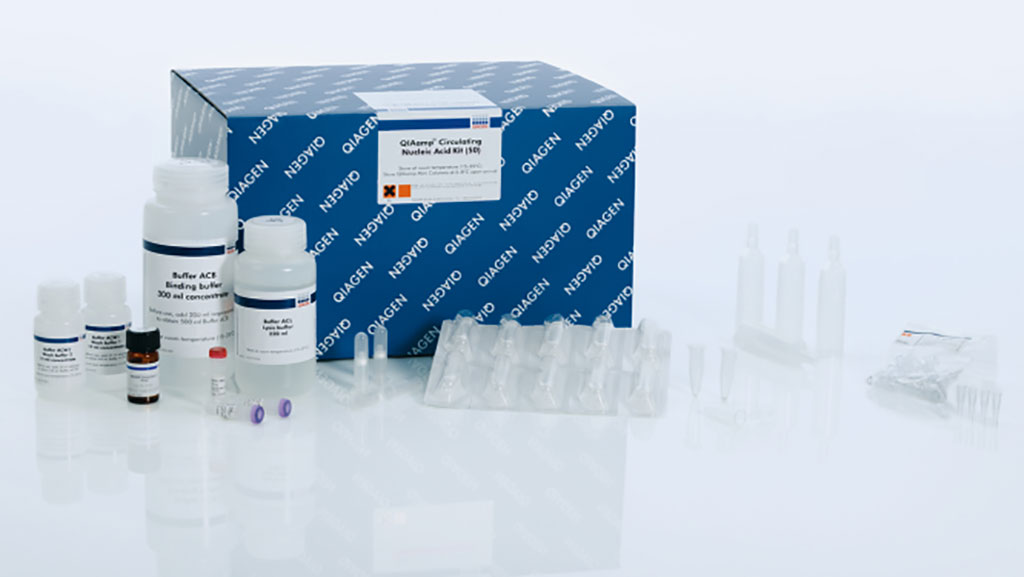Genome-Wide NIPT Uncovers Additional Findings
Posted on 06 Jun 2022
The rising awareness regarding fetal testing, together with technological advancements, has boosted the clinical demand for non-invasive prenatal testing (NIPT), making this test an important component of prenatal care worldwide.
NIPT providers are expanding the test beyond screening for the common aneuploidies: (trisomy 21 (Down syndrome), 18 (Edwards syndrome), and 13 (Patau syndrome) to genome-wide screening. Prenatal testing has also been adapted and expanded to detect additional chromosomal aneuploidies including rare autosomal trisomies and structural chromosomal aberrations, both of fetal and maternal origins.

Clinical Geneticists at the Erasmus Medical Center (Rotterdam, The Netherlands) and their colleagues collected peripheral blood samples at 11 weeks of pregnancy and sent to one of the three clinical genetic laboratories performing NIPT. Blood was centrifuged at 1,600 × g for 10 minutes at 4 °C without brakes and plasma was aspired. After a second centrifuge step for 10 minutes at 5,600 × g without brakes, cell-free DNA was isolated from the plasma through the use of QIAsymphony Circulating DNA Kits (QIAgen, Venlo, the Netherlands) followed by library preparation for genome-wide shallow sequencing (0.2× 51 bp single-end) on the HiSeq4000 or the NextSeq500 sequencer (Illumina, San Diego, CA, USA).
The investigators reported that more than 43% of women chose to undergo NIPT, and, of those, nearly three-quarters opted for GW-NIPT. Overall, a common aneuploidy was found among 0.49% of individuals who underwent any type of NIPT screening. But an additional finding was uncovered within 0.36% of individuals who underwent GW-NIPT, meaning that 1 in every 275 women who chose GW-NIPT had a result indicating an additional finding.
For about 10% of those cases, the scientists could not determine the origin of the additional chromosomal aberration. But of the remainder, nearly a quarter were fetal in origin, while just more than a quarter were maternal in origin and about half were due to placental mosaicism. Of the fetal origin chromosomal aberrations, 77.2 % were pathogenic. These aberrations included a handful of rare autosomal trisomies, but most were structural chromosomal aberrations. Parents chose terminations in 86.9% of cases.
A mosaic placental origin was confirmed or assumed for 52.8% of cases and these typically were rare autosomal trisomies. About half of these cases were associated with adverse perinatal outcomes, including increased risk of preeclampsia, preterm birth, and low birth weight, among others. About two-thirds of the chromosomal aberrations of maternal origin were acquired chromosomal aberrations, though others were constitutional CNVs. More than half the women with constitutional chromosomal aberrations had disease-related symptoms that had not previously been diagnosed. Additionally, 12 of the 15 chromosomal aberrations of maternal origin that were complex aberrations were due to a maternal malignancy.
Robert-Jan Galjaard, MD, PhD, a clinical cytogeneticist, and the senior author of the study, said, “Based on the known prevalence of severe chromosomal aberrations in pregnancies, we were expecting to detect pathogenic fetal chromosomal aberrations other than the common trisomies. For certain we see the added value of the additional pathogenic fetal aberrations that are detected with GW-NIPT. The prevalence of these findings is about the same as trisomy 13 and 18, for which prenatal screening is widely accepted.”
The authors concluded that the majority of additional findings identified by GW-NIPT have clinical impact. Most fetal chromosomal aberrations are pathogenic and associated with severe clinical phenotypes. The clinical impact of maternal findings is predominantly limited to maternal malignancies. The study was published on June 2, 2022 in the American Journal of Human Genetics.
Related Links:
Erasmus Medical Center
Qiagen
Illumina













